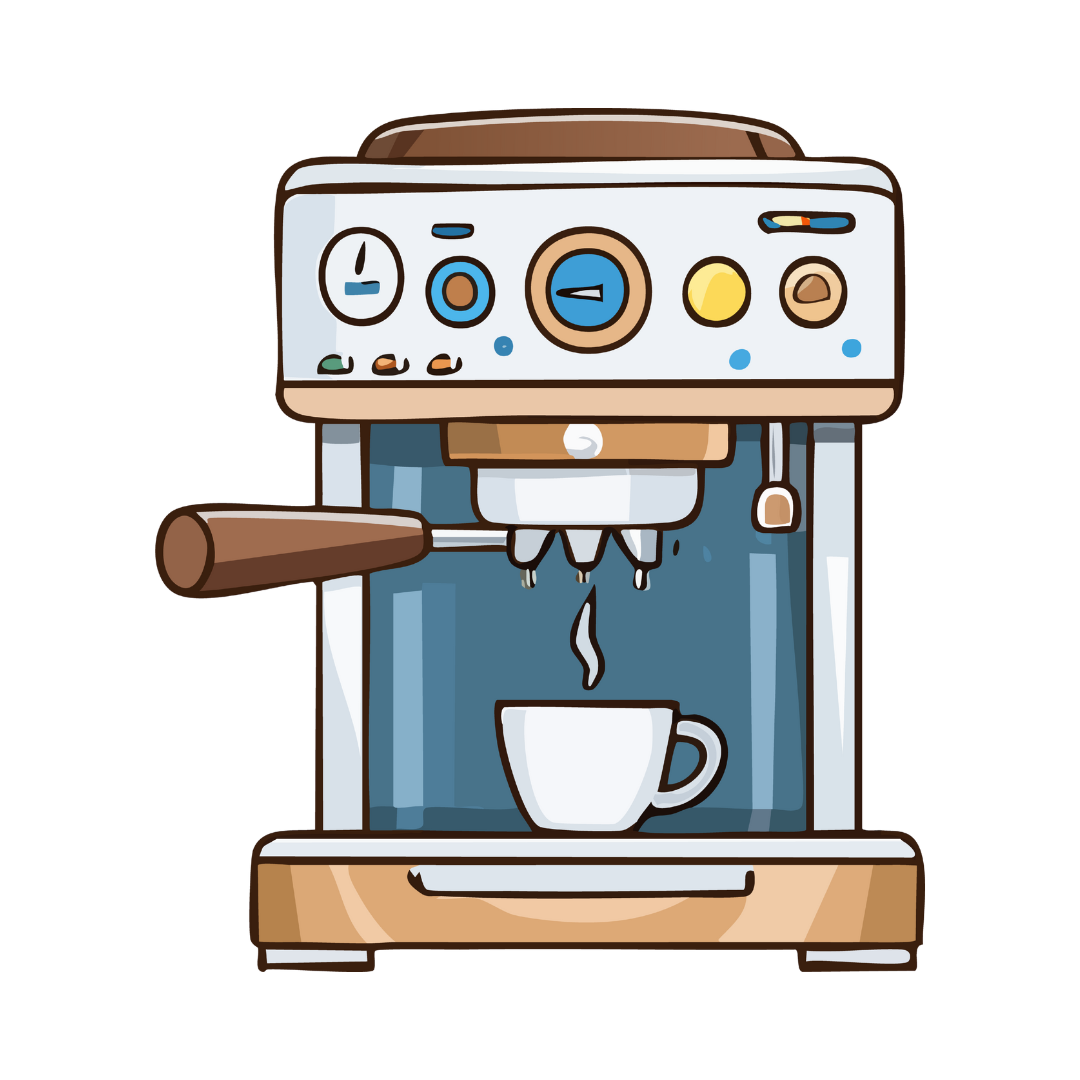
Espresso
Brewing Espresso (Elaborated Guide with Why & How)
1. Start with Fresh Coffee
-
How: Always use beans roasted within the last 2–3 weeks. Grind just before brewing.
-
Why: Coffee is full of aromatic compounds that degrade quickly after roasting and grinding. Espresso brewing happens under high pressure, so stale coffee tastes flat, papery, or bitter. Fresh beans = crema + aroma + complexity.
2. Grind Size & Dose
-
How:
-
Use a burr grinder for consistent particle size.
-
Typical double shot: 18–20g of ground coffee.
-
Grind should feel like fine sand, not powder.
-
-
Why:
Espresso is brewed in ~25 seconds. Grind controls how water interacts with coffee:-
Too coarse → water rushes through, under-extraction → sour, watery shot.
-
Too fine → water chokes, over-extraction → harsh, bitter shot.
The right grind extracts sugars, acids, and oils in harmony.
-
3. Distribution & Tamping
-
How:
-
Tap or use a distribution tool to spread grounds evenly.
-
Tamp straight down with 15–20kg pressure (firm but not excessive).
-
-
Why:
Espresso water follows the path of least resistance. Uneven tamp = “channeling” → some coffee over-extracts (bitter), others under-extract (sour). A level, consistent tamp ensures every particle extracts equally.
4. Brew Ratio & Yield
-
How:
-
Standard ratio: 1:2 (18g in → 36g out).
-
Pull the shot in 25–30 seconds.
-
-
Why:
Brew ratio balances strength and flavor:-
Ristretto (1:1) → thick, syrupy, chocolate-heavy.
-
Espresso (1:2) → sweet, balanced, smooth.
-
Lungo (1:3) → lighter body, higher bitterness.
Ratio = recipe that shapes flavor.
-
5. Temperature & Pressure
-
How:
-
Brew temp: 90–96°C.
-
Pressure: ~9 bars.
-
-
Why:
-
Too hot → coffee burns, bitter taste.
-
Too cold → acids dominate, sour taste.
-
Stable 9-bar pressure extracts soluble compounds evenly → oils, acids, sugars all balance out.
-
6. Observe the Extraction
-
How: Watch the shot as it flows:
-
Starts dark → rich caramel stream → golden crema.
-
-
Why:
Espresso should look like warm honey dripping.-
Fast & pale → grind too coarse / under-extracted.
-
Slow & dark → grind too fine / over-extracted.
Visual cues are as important as taste.
-
7. Taste & Adjust
-
How: Always taste straight espresso before adding milk/sugar. Adjust based on what you sense:
-
Sour → grind finer or increase brew time.
-
Bitter → grind coarser or shorten brew time.
-
Weak/watery → increase dose or reduce yield.
-
-
Why: Espresso is extremely sensitive. Small tweaks (0.1g dose or 1 second extraction) can shift the entire flavor. This is why baristas “dial in” every morning.
✅ In essence:
Espresso is the art of balancing extraction. Each variable (beans, grind, dose, tamp, time, ratio, pressure, temperature) affects what gets dissolved into the cup. Sugars = sweetness, acids = brightness, oils = body. The goal is harmony.
